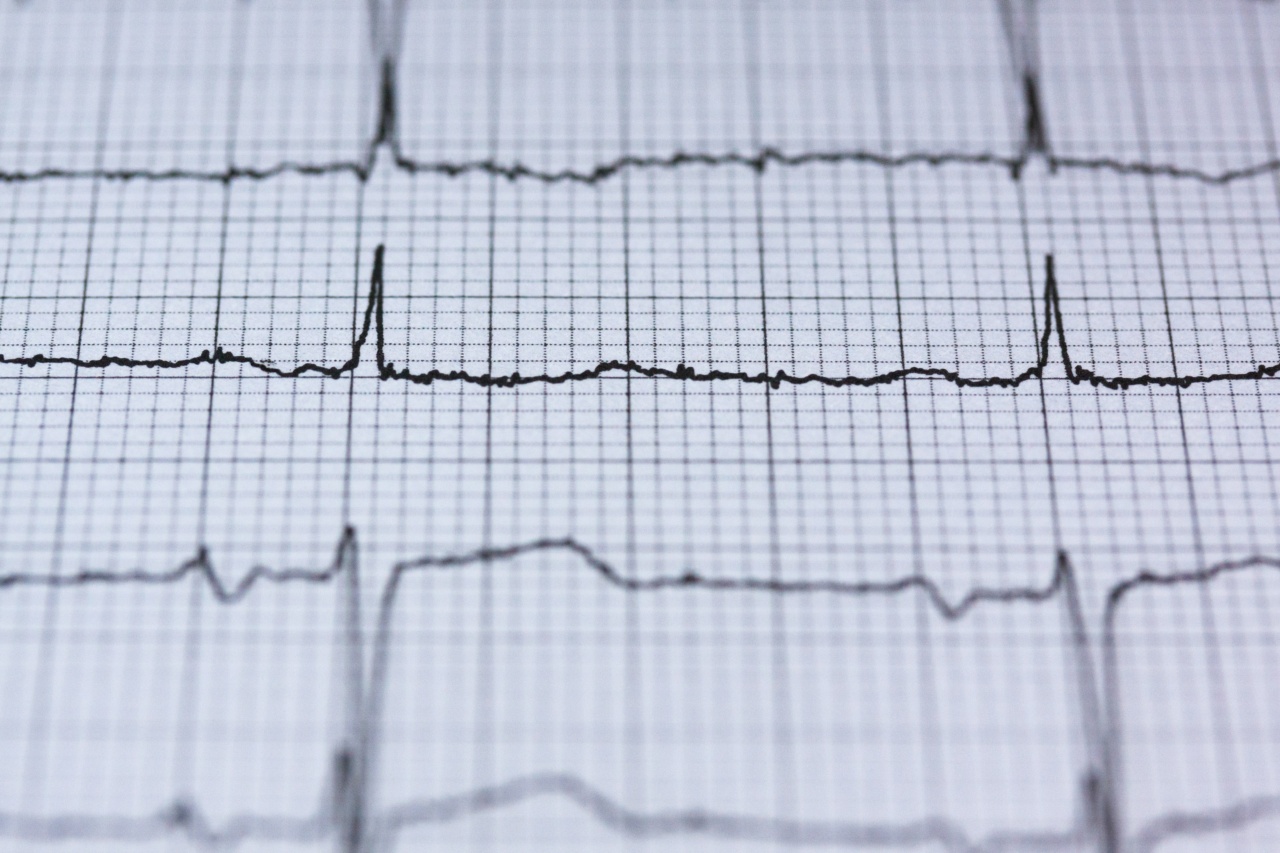Heart rhythm disturbances, also known as arrhythmias, are abnormal heartbeats that can disrupt the overall rhythm and function of the heart. These disturbances can have serious consequences, including an increased risk of heart attacks.
Understanding the relationship between heart rhythm disturbances and heart attacks is crucial for both medical professionals and individuals seeking to maintain a healthy cardiovascular system.
Types of Heart Rhythm Disturbances
There are several types of heart rhythm disturbances that can occur, each with its own characteristics and potential impact on heart health. Some common examples include:.
1. Atrial Fibrillation
Atrial fibrillation (AFib) is one of the most common types of arrhythmias and occurs when the upper chambers of the heart (atria) beat irregularly or too fast.
This irregular electrical activity can lead to the formation of blood clots, increasing the risk of heart attacks and strokes.
2. Ventricular Fibrillation
Ventricular fibrillation (VFib) is a life-threatening arrhythmia that happens when the lower chambers of the heart (ventricles) quiver instead of pumping blood effectively.
VFib can rapidly lead to cardiac arrest and requires immediate medical intervention, including defibrillation.
3. Ventricular Tachycardia
Ventricular tachycardia (VTach) is characterized by a rapid heart rate originating from the ventricles.
It can be sustained or nonsustained, and while some cases may be benign, others can be life-threatening and increase the risk of heart attacks or sudden cardiac arrest.
4. Bradycardia
Bradycardia refers to an abnormally slow heart rate, generally below 60 beats per minute. While it may be normal in athletes or during sleep, severe bradycardia can cause inadequate blood flow to organs, leading to heart attacks or other complications.
5. Supraventricular Tachycardia
Supraventricular tachycardia (SVT) covers a range of arrhythmias originating above the ventricles, usually in the atria.
SVT can cause a rapid heartbeat and potentially increase the risk of blood clot formation and heart attacks, especially if left untreated.
Causes and Risk Factors
The causes and risk factors of heart rhythm disturbances vary depending on the specific type of arrhythmia, but some common factors may contribute:.
1. Structural Heart Problems
Structural abnormalities in the heart, such as damage from a heart attack, congenital heart defects, or heart valve issues, can disrupt the heart’s electrical system and increase the likelihood of arrhythmias and subsequent heart attacks.
2. Age and Gender
Advancing age and male gender are associated with a higher risk of heart rhythm disturbances and heart attacks.
3. High Blood Pressure
Uncontrolled high blood pressure can strain the heart, lead to changes in its electrical activity, and contribute to the development of arrhythmias.
4. Obesity and Sedentary Lifestyle
Obesity and a sedentary lifestyle increase the risk of developing various heart conditions, including arrhythmias and heart attacks.
5. Substance Abuse
The use of certain substances like tobacco, alcohol, and illegal drugs can disrupt the heart’s electrical system and contribute to arrhythmias and cardiovascular complications.
Link Between Heart Rhythm Disturbances and Heart Attacks
Heart rhythm disturbances, when left untreated or unmanaged, can significantly increase the risk of heart attacks. The following mechanisms explain the relationship between the two:.
1. Ischemia and Infarction
Arrhythmias like ventricular fibrillation or sustained ventricular tachycardia can cause insufficient blood flow to the heart muscle, leading to ischemia. If left untreated, ischemia can progress to a heart attack (myocardial infarction).
2. Blood Clot Formation
Certain arrhythmias, notably atrial fibrillation, disrupt the normal blood flow within the heart, increasing the likelihood of blood clot formation. If these clots travel to the coronary arteries, they can block blood flow and cause a heart attack.
3. Increased Workload and Stress on the Heart
Chronic arrhythmias can put an increased workload and stress on the heart, which, over time, may contribute to the development of coronary artery disease and subsequent heart attacks.
Prevention and Treatment
Preventing heart rhythm disturbances and reducing the risk of heart attacks involves various measures:.
1. Healthy Lifestyle Choices
Adopting a healthy lifestyle that includes regular exercise, a balanced diet, weight management, and avoiding or limiting substance abuse can significantly reduce the risk of both arrhythmias and heart attacks.
2. Medications
Medications, such as antiarrhythmic drugs, beta-blockers, and anticoagulants, may be prescribed to manage specific arrhythmias and prevent complications like blood clot formation.
3. Medical Procedures
In cases where medications are ineffective or contraindicated, medical procedures like pacemaker implantation or catheter ablation may be recommended to normalize heart rhythms and reduce the risk of heart attacks.
Conclusion
Heart rhythm disturbances are a significant concern with the potential to increase the risk of heart attacks.
Understanding the different types of arrhythmias, their causes, and the mechanisms linking them to heart attacks allows for better prevention, management, and treatment of these conditions. By adopting a healthy lifestyle, seeking medical advice when necessary, and following prescribed treatments, individuals can significantly reduce the risk of experiencing heart rhythm disturbances and their associated complications.





























